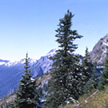| |
Report: Analysis of Sedimentation and Sediment Mitigation Strategies for Mission Creek
| Report Documents
|
|
|
| |
| Map Plotfiles
|
-
No files of this type available
|
| |
| Data Files
|
-
No files of this type available
|
| |
| Digital Map Files
|
-
No files of this type available
|
| |
| Image Document
|
-
No files of this type available
|
| |
| Video Files
|
-
No files of this type available
|
| |
|
All Documents
|
|
|
| Contact
|
|
-
If you have any questions on the information presented, or require additional report data or attachments, please contact the Report Contact
|
|
|
The Mission Creek channel as it flows through the city of Kelowna is highly disturbed by channelization. High sediment loads in Mission Creek have the potential to damage fish restoration works proposed for the channel. Therefore, a study of sedimentation, the causes of sedimentation and mitigation of sedimentation within Mission Creek was conducted.
|
Author: Dr. Leif M. Burge; Burge Ecohydraulics
|
|
|
Date Published: Mar 2009
|
Report ID: 16013
|
Audience: Government and Public
|
This report investigates the spatial and temporal patterns of sediment deposition in Mission Creek. An analysis of the frequency and intensity of large flows that transport the sediment was conducted. An analysis of the long profile and grain size pattern from the exit from Ghallaghars Canyon to Okanagan Lake is presented. An analysis of 18 reaches in Mission Creek was conducted. These reaches were grouped into natural, channelized, sedimentation, and downstream sections for interpretation. Mission Creek displayed a braided or wandering channel pattern on a 1938 orthophoto. Therefore, each reach was assessed to determine if it had the same energy and grain size characteristics as a braided or meandering river channel. The restoration plan presented by Gaboury and Slaney (2003) and Gaboury et al. (2004) is reviewed in light of the new analyses. Recommendations are presented in the final section.
Sedimentation downstream of KLO Bridge has been a significant problem since at least 1967. Since 1990, sediment has been extracted from Mission Creek downstream of KLO Bridge three times (1990, 1997, and 2006). The average time between sediment extractions to maintain channel capacity during this period is every 8 years. Since 1937, large flow events have occurred every 6.4 years on average, with recent large flows occurring in 1986, 1990, 1997, and 2006.
The analysis contained in this report yielded a number of recommendations for the mitigation of sedimentation and the restoration of Mission Creek. The setting back of dykes to form a floodplain within the new dyke location to improve the geomorphic and ecological functioning of the river is sound. Land should be purchased where possible to allow for the setback of the dykes.
|
Report Type
| |
Fish and Aquatic Habitat Information |
| |
Subject
| |
Fish Species - Kokanee - Oncorhynchus nerka |
| |
Fish Species - Rainbow Trout - Oncorhynchus mykiss |
| |
Region - Okanagan |
| |
Fish and Fish Habitat - Impact Assessment |
| |
Fish and Fish Habitat - Restoration |
| |
Watershed Groups - 310 - Okanagan |
| |
Water Information - Water Quality |
| |
|
|
|
|
Warranty Disclaimer
This information is provided as a public service by the Government of British Columbia, Box 9411, Victoria, British Columbia, Canada V8W 9V1.
This Web site and all of the information it contains are provided "as is" without warranty of any kind, whether express or implied. All implied warranties, including, without limitation, implied warranties of merchantability, fitness for a particular purpose, and non-infringement, are hereby expressly disclaimed.
Limitation of Liabilities
Under no circumstances will the Government of British Columbia be liable to any person or business entity for any direct, indirect, special, incidental, consequential, or other damages based on any use of this Web site or any other Web site to which this site is linked, including, without limitation, any lost profits, business interruption, or loss of programs or information, even if the Government of British Columbia has been specifically advised of the possibility of such damages.
|
